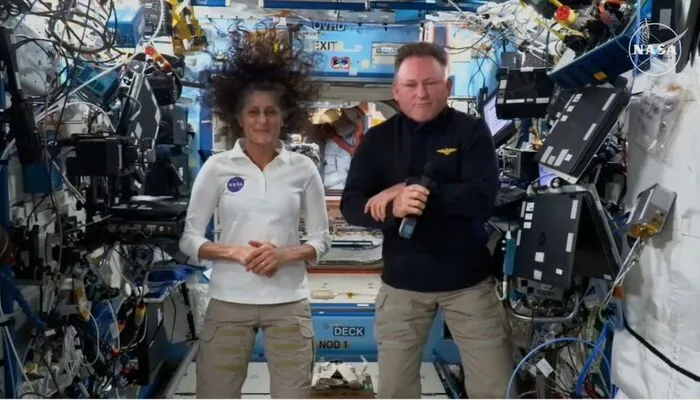On November 4, 2024, NASA astronauts onboard the International Space Station (ISS) are ensuring their voices are heard in the U.S. election by casting votes from orbit. Despite being far from home, four American astronauts—Don Pettit, Nick Hague, Butch Wilmore, and Suni Williams—are taking advantage of secure voting systems to participate in this crucial civic duty. This unique process underscores the commitment to voting from space, a right afforded to them through special provisions in Texas law.
Voting from Space: A Unique Right for Astronauts
NASA astronauts traditionally claim residency in Texas, home to NASA’s Johnson Space Center. In 1997, the Texas Legislature passed a bill allowing them to vote from space, a move that first saw fruition when astronaut David Wolf cast a vote from Russia’s Mir Space Station. This legislative foresight has made it possible for astronauts to participate in elections without needing to be on Earth.
Absentee Voting from the ISS
The voting process for astronauts begins with the Federal Postcard Application (FPCA), similar to absentee ballots for U.S. citizens and military personnel abroad. Don Pettit and Nick Hague, anticipating their time in orbit during the election, completed their FPCAs before launching. Williams and Wilmore, however, joined the vote-from-space mission under unexpected circumstances.
Originally part of Boeing’s Starliner mission, Williams and Wilmore were scheduled to return to Earth within a week. But when the Starliner experienced thruster malfunctions, it remained docked for three months for safety assessments. NASA then transferred Williams and Wilmore to SpaceX’s Crew-9 mission, officially extending their stay. This unexpected transition placed them in orbit on Election Day, prompting NASA to arrange voting logistics so they could fulfill their civic responsibilities.
Read: Trump or Harris? Arab American Voters Caught in Difficult Choices
How Voting from Space Works
NASA’s advanced communications network plays a vital role in enabling astronauts to vote securely from space. After an astronaut completes an electronic ballot on the ISS, it transmits through NASA’s Tracking and Data Relay Satellite System to a ground station at White Sands Test Facility in New Mexico. From there, the ballot goes to NASA’s Mission Control Center in Houston before securely reaching the county clerk for final casting.
After that, NASA ensures the ballot’s security throughout this process by encrypting it, making it accessible only to the astronaut and the authorized election official. This high-level encryption preserves the integrity of the vote, giving astronauts the confidence to exercise their rights without compromising security.
Continuing the Tradition of Voting from Space
NASA’s system for voting from space reflects its commitment to keeping astronauts connected with life on Earth, even in matters as significant as civic duty. As astronaut Suni Williams remarked in a September press call, voting from space is “pretty cool” and symbolizes the importance of democratic participation. Her colleague, Butch Wilmore, echoed the sentiment, noting NASA’s efforts to ensure their involvement in the election.
While Williams and Wilmore’s mission has stretched beyond its planned duration, they, along with Pettit and Hague, are still connected to the responsibilities of citizenship. Their commitment to voting from orbit serves as a powerful reminder of the importance of participating in democracy, even from the unique vantage point of space.
As these astronauts carry out their duties on the ISS, they join millions of Americans making their voices heard on Election Day. The effort to vote from space underscores NASA’s dedication to supporting astronauts’ civic engagement and setting a remarkable example of participation for everyone back on Earth.
Follow us on Google News, Instagram, YouTube, Facebook,Whats App, and TikTok for latest updates
